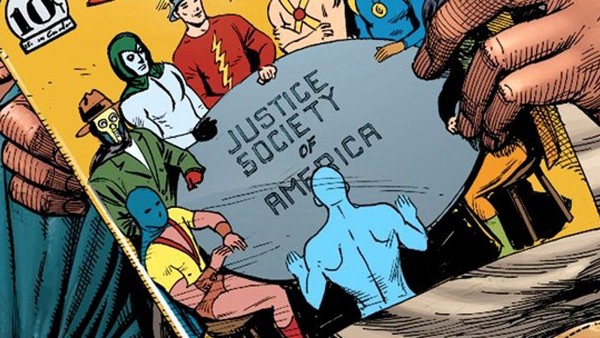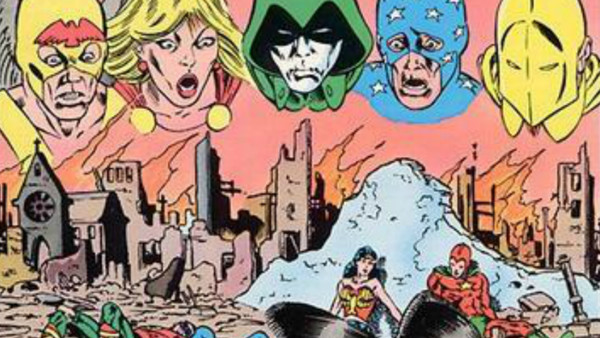Justice Society Of America - Explained
3. How Retcons Changed EVERYTHING

The words 'retroactive continuity' are enough to fill even the most ardent of comic book fans with dread, because they can effectively render everything that a reader knows about a given character or universe irrelevant.
The Justice Society, although not to the degree of characters like Supergirl or other super-teams like The Legion of Super-Heroes, has been dealt a pretty raw deal by DC's retcons. Their original position as the formative DC super-team was first dealt a blow during the Silver Age of Comics, where DC updated several of their most successful characters. The Flash bore a sleeker design, and was no longer Jay Garrick, but instead a scientist called Barry Allen. Likewise, the mystical Green Lantern known as Alan Scott was replaced by a fighter pilot called Hal Jordan, while the Green Lantern mythos itself would switch supernatural pastures for something decidedly more sci-fi with his arrival.
To account for the new versions of Flash and Lantern - and in a bid to recognise the various alternate realities characters like Superman kept winding up in - DC decided to create an official multiverse. The JSA had disappeared for some time when eventually the new and improved Justice League debuted, and the original reason given by the publisher was that their adventures were located on a different universe - specifically Earth-1.
Later retcons established the JSA as the official precursor of the Justice League, however, with the two teams even teaming up repeatedly during the Bronze Age. It was at this time the heroes in the group were established as being physically older than their younger counterparts - an image that has stuck ever since - but it wasn't long before the JSA were toyed with yet again, being actively stricken from mainstream DC continuity during the cataclysmic events of Crisis on Infinite Earths.

The JSA's fate was resolved in the Last Days of the Justice Society one-shot, which left only Doctor Fate, Power Girl, the Star Spangled Kid and the Spectre as the team's survivors. DC would later publish comics to fill in the JSA's history, including the previously mentioned DC Special #29, which expanded upon the group's origins, but their popularity had seemingly waned - no doubt helped in part by the sheer array of retcons that had been inflicted on them.
It wouldn't be until Johns' run that the group really settled into the post-crisis DCU, long after all those retcons had firmly established the group's in-universe history. Here, they were always a part of the main continuity, and they remained that way until the New 52, a company wide reboot designed to once again streamline DC continuity, but one that only ended up making it more confusing.
The New 52 reestablished the team as being from an alternate Earth, this time Earth-2. However, this too wouldn't last, and as DC once more opted for another refresh, the status of the JSA was thrown in doubt.
Fortunately, the recent conclusion to Geoff Johns and Gary Frank's Doomsday Clock has restored the JSA to active continuity. In fact, they're pivotal to the series, with the JSA's return proving decisive in remoulding the fabric of the DCU and restoring it to something ultimately more familiar before Manhattan - a clear proxy for DC editorial - changed it beyond recognition.